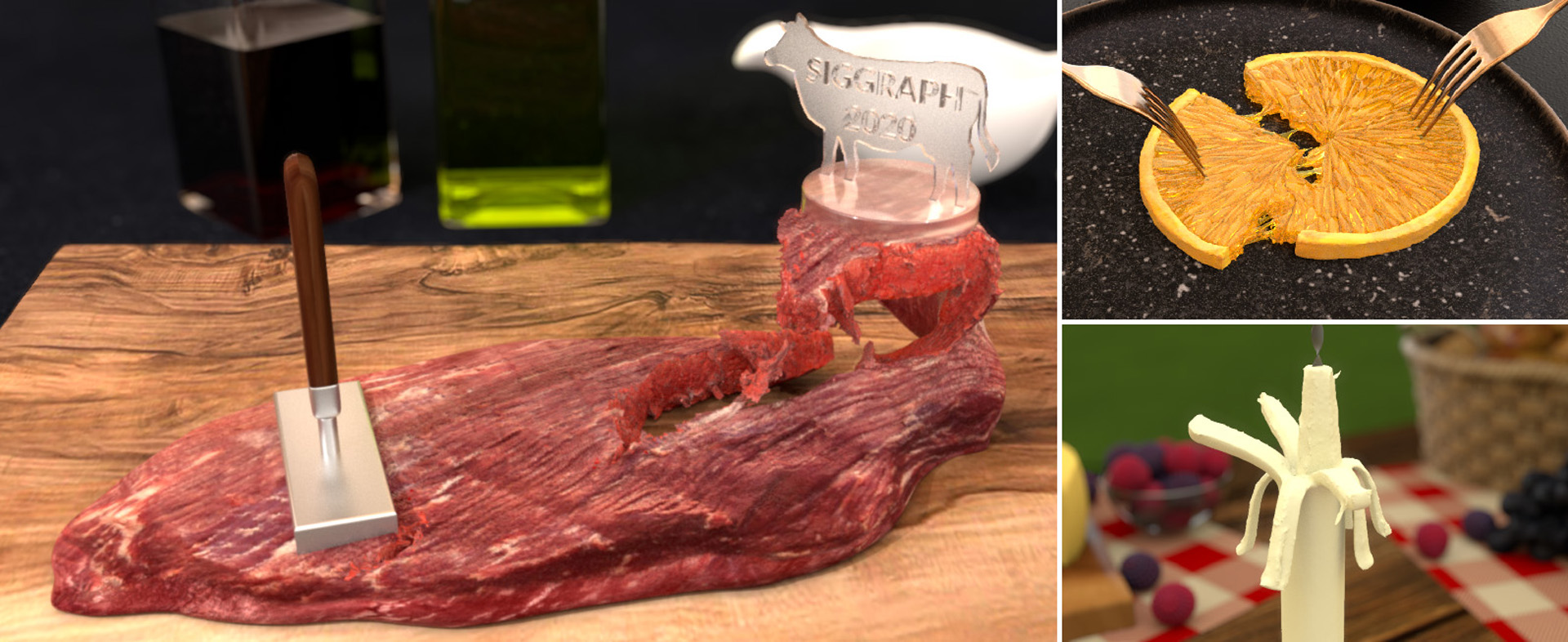“AnisoMPM: Animating Anisotropic Damage Mechanics” by Wolper, Chen, Li, Fang, Qu, et al. …
Conference:
Type(s):
Title:
- AnisoMPM: Animating Anisotropic Damage Mechanics
Session/Category Title: Simulating With Points
Presenter(s)/Author(s):
Abstract:
Dynamic fracture surrounds us in our day-to-day lives, but animating this phenomenon is notoriously difficult and only further complicated by anisotropic materials—those with underlying structures that dictate pre- ferred fracture directions. Thus, we present AnisoMPM: a robust and gen- eral approach for animating the dynamic fracture of isotropic, transversely isotropic, and orthotropic materials. AnisoMPM has three core components: a technique for anisotropic damage evolution, methods for anisotropic elas- tic response, and a coupling approach. For anisotropic damage, we adopt a non-local continuum damage mechanics (CDM) geometric approach to crack modeling and augment this with structural tensors to encode material anisotropy. Furthermore, we discretize our damage evolution with explicit and implicit integration, giving a high degree of computational efficiency and flexibility. We also utilize a QR-decomposition based anisotropic constitutive model that is inversion safe, more efficient than SVD models, easy to imple- ment, robust to extreme deformations, and that captures all aforementioned modes of anisotropy. Our elasto-damage coupling is enforced through an additive decomposition of our hyperelasticity into a tensile and compressive component in which damage is used to degrade the tensile contribution to allow for material separation. For extremely stiff fibered materials, we further introduce a novel Galerkin weak form discretization that enables embedded directional inextensibility. We present this as a hard-constrained grid velocity solve that poses an alternative to our anisotropic elasticity that is locking-free and can model very stiff materials.




